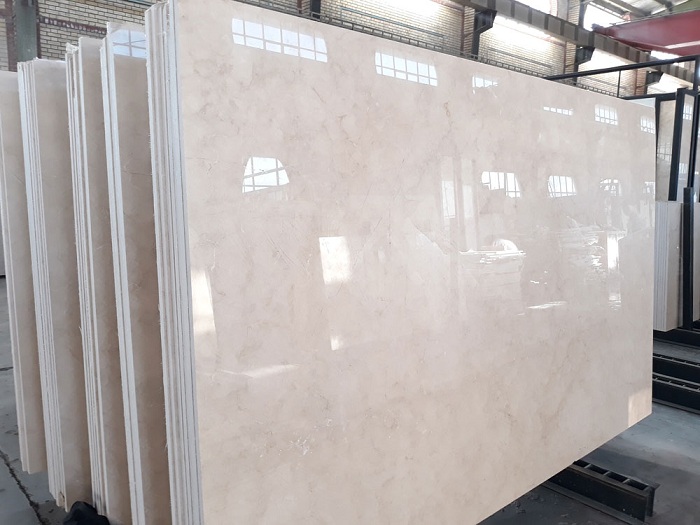The best examples of marble and their application in buildings

Marble is one of the limestone stones which is one of the most widely used and best building stones.
According to the International Exhibition of Iranian Stone, marble is one of the limestone stones, which is also one of the most widely used and best building stones. Due to the many properties of this stone, it has been considered by many builders. Marbles with a bright color theme are mostly used in the interior of the building to illuminate the space. This stone with its high density is a strong and durable stone that can be used in parts of the building that need high-strength stones.
The best and most widely used marble stones
Marble has a high diversity due to its different mines, this diversity means differences in the structure, design and color of each of these stones. Among the marbles that are very widely used today and you have probably heard their names many times in building stones, you can find Abadeh marble, Arsanjan peacock marble, Khoy marble, Datis marble, Paradise marble, Deh marble, Hersin marble, Hermes marble, Hermes marble Markam pointed out and so on. All the mentioned marbles can be prepared from stone quarries and stone warehouses in the country. Atasang is one of the producers of marble that produces its products with high variety and large area. Atasang factory complex, which is known as the most prestigious stone cutting in Isfahan, produces all kinds of natural building stones with suitable quality. To get acquainted with some of these marbles and to know the use of each of them, we will describe some of these marble stones.
Marble Abadeh
One of the high quality and prominent stones that has been used extensively in recent decades is called Abadeh marble, which is currently one of the most widely used in the construction industry. As the name of this stone shows, the mine that extracts this stone is located in Abadeh, Shiraz, but apart from this mine, there are other mines in different cities that have a stone similar to Abadeh. This stone is cut in different dimensions such as slabs, slabs or the same length, stairs, carpets and tiles and is used in different parts of the building. The remarkable thing about marble is that it has a high water absorption due to its calcareous structure. For this reason, it is recommended not to use this stone in places that do not have high humidity and drainage. Abadeh marble with cream color and high durability is mostly used in interior parts of the building such as stairs, staircases, interior facades and interior of the building.
Marble Paradise
Paradise marble is another stone that is in the category of building stones with light cream to dark cream or beige color. This stone is mostly used in the interior walls of buildings as well as corridors and lobbies of office and residential buildings. The most common use of this building stone is that it is used for the floors of buildings, rooms and kitchens. The reason for choosing this stone for the floor of the building is its important feature, ie the high abrasion resistance of this stone and also its light color. When this stone is used with its thickness in the floor of the building, it is very resistant to shocks and frequent trips on it and can be effective for the building for a long time. As mentioned, Paradise stone has been used extensively in lobbies. For this reason, the use of large size of this stone, ie the size of slabs, is more and the demand for this size is higher in stonecutters.
Datis Marble
Datis stone with its light color background is another light marble. This stone sometimes has brown lines and white flowers on its surface. Datis marble is extracted from Isfahan mines in Khor and Biyabank cities and due to the high demand for this stone, this stone is cut in all required dimensions. Datis stone, like other marble stones, is a strong and durable stone due to its lack of porosity and high compaction. When a stone is heavy, dense and without porosity, it is usually not a suitable stone for use in the exterior of the building. Because, as you know, porous stones are needed for the direction of the facade so that the mortar can penetrate into them. As a result, this marble will work in different parts of the building, like the other marbles mentioned above, in the interior facade walls, interior decoration, as well as the floor of the building and the stairs and staircases.
* ILNA










